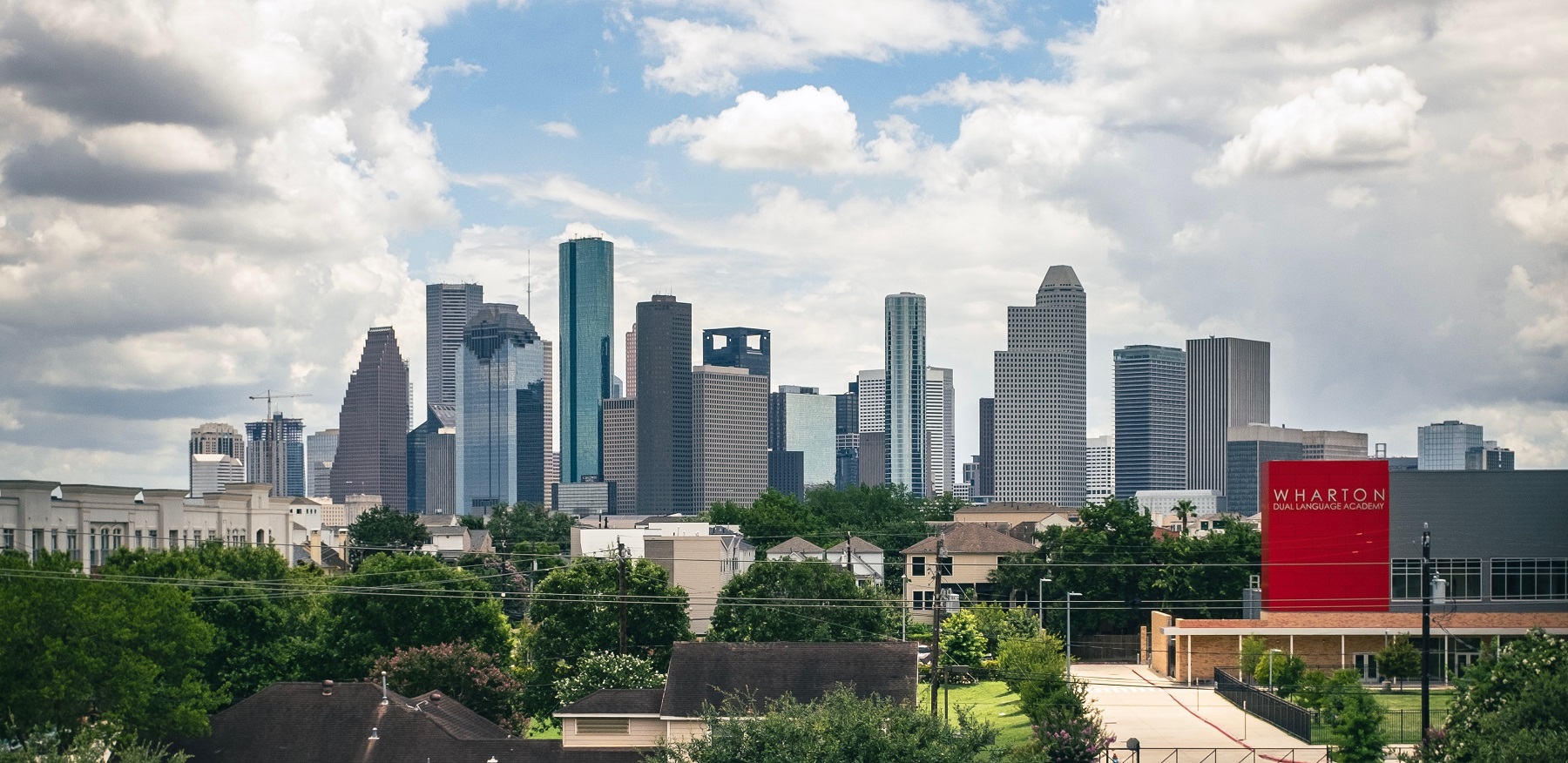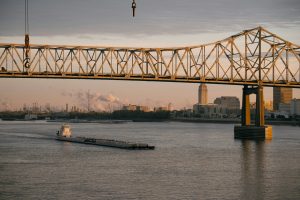Quick search
CTRL+K
Quick search
CTRL+K

Baton Rouge is the capital of Louisiana and the second largest city in the state. It was the French explorer Pierre Le Moyne d’Iberville who gave the city its name. It happened when he was leading an expedition up the Mississippi River in 1698, and here he saw a red marker on the site, which marked the boundary between the hunting grounds of two local Indian tribes, the Houma and Bayagoula. The red pole was in French le bâton rouge.
The city’s European colonization began in 1721, when France established a military settlement and a trading post on the site of the first natural bluff along the waters of the Mississippi. This was important in order to establish a city at a height that avoided the regular floods along the river. Baton Rouge developed on the east bank of the Mississippi River, and through the years it was governed by several powers, before the acquisition of Louisiana by the United States in 1803.
After the American purchase of French Louisiana, Baton Rouge was incorporated in 1817, and it became the capital of Louisiana in 1846, replacing New Orleans. By the outbreak of the American Civil War, the population of Baton Rouge was nearly 5,500, and the number just about doubled towards the end of the century. In the 1950s and 1960s, the petrochemical industry boomed in Baton Rouge, stimulating the city’s expansion beyond its original center forming the city, you can see today.
There are several sights in Baton Rouge today, and the old and the present state capitols are the most well-known. The Old Louisiana State Capitol was designed by architect James Dakin with construction beginning in 1847. Unlike the Classicist capitols many places in United States, Dakin designed the building as a medieval castle in Neo-Gothic style. The unique capitol building overlooks the Mississippi River and housed the Louisiana State Legislature until the current capitol tower building was constructed from 1930-31.
The present Louisiana State Capitol replaced Dakin’s old building, and it was also a unique construction. At 137 meters, it was constructed as the tallest capitol in the United States. The State Capitol is one of the foremost examples of the art deco design which was popular in the 1930s, and it was the brainchild of Governor and U.S. Senator Huey P. Long. On September 8, 1935, Long was shot in the hall beside what is now the Speaker’s Office. He died two days later as a result of his wounds, and the statue and gravesite of Huey P. Long can today be visited in the Capitol Gardens in front of the building.
There is an observation deck at the 27th floor in the Louisiana State Capitol. The views are spectacular from here overlooking the Mississippi River and downtown Baton Rouge, where more sights wait. One of them is the nearby Capitol Park Museum with exhibits on the history and culture of Louisiana. You can also see the Pentagon Barracks which were built 1819-1825 and the Catholic St. Joseph Cathedral in the area close to the capitol building. St. Joseph Cathedral is the mother church of the Diocese of Baton Rouge and was built 1853-1856.
The historic downtown is close to the former Louisiana capitol. Across the street from the capitol you can visit the Louisiana State University Museum of Art. It hosts historic and contemporary art exhibitions, as well as a vast permanent collection spanning the 1700s to present day. Along North Boulevard you can visit the impressive Old Governor’s Mansion. It was built 1930 and had Huey P. Long as the first resident. It was home to the Louisiana governors until 1963, when a new residence opened east of the state capitol. You can continue a but south to the Memorial Tower, erected in 1923 and officially dedicated in 1926. It is a memorial to Louisianans who died in World War I.
The Mississippi River is worth seeing as well. The famous river which is a part of U.S. history flows just west of downtown Baton Rouge. You can simply enjoy the view and pay a vist to the USS KIDD Veterans Museum. USS Kidd is a Fletcher-class destroyer from 1943, now berthed in Baton Rouge as a museum ship. The river was vital for the historic plantations, and you can see the Magnolia Mound Plantation which is a great example of French Creole architecture. The plantation was built in 1791, and its well-preserved buildings take you back to an important part of Louisiana history.

New Orleans is located in Louisiana in southern states of the United States, and they have a special charm. The atmosphere in the old center, also known as the French Quarter, is unique to the country with live jazz music in the streets, cast-iron balconies, horse-drawn carriages and old southern state charm, seasoned annually with Mardi Gras celebrations as one of the city’s many highlights.
The city of New Orleans was founded with the name Nouvelle Orleans, the capital of the French area of Louisiana. You can still see the French street names on signs in the French Quarter, and the language is still a bit different from the rest of the states. The restaurants offer dishes other than in the rest of the United States as well, since this is the home of the tasty Creole cuisine.

Shreveport is a city in the state of Louisiana, which was founded in 1836 by the Shreve Town Company. Shreveport was named in honor of Captain Henry Miller Shreve, who cleared the Red River of a massive logjam, making the area navigable. The town was officially incorporated in 1839 and quickly became a busy place due to its strategic location at the juncture of the Red River and the Texas Trail.
In the late 19th and early 20th centuries, Shreveport thrived as a center for the oil industry, which brought prosperity and growth to the city. The discovery of oil in nearby Caddo Parish in 1906 led to a boom that transformed Shreveport into a major player in the oil business. The city also became known for its contributions to the entertainment industry, particularly through the Louisiana Hayride.

Jackson is the largest city and the capital of the US state of Mississippi. The city was founded in 1821 and named after General Andrew Jackson, who later became President of the United States. Until then, Natchez had been capital of Mississippi, but a more centrally located location was desired. Therefore, Thomas Hinds, James Patton and William Lattimore were sent out to find the right place, and they chose the trading post of LeFleur’s Bluff.
Architect Peter van Dorn designed a city plan for Jackson, and his work with streets like a checkerboard was inspired by Thomas Jefferson’s recommendations. The city developed and the railroad arrived in 1840, but during the American Civil War in the 1860s, large parts of Jackson were destroyed, and it had to be rebuilt. Growth quickly returned, and the population doubled from just over 4,000 in 1870 to around 8,000 in 1900.

Houston is the largest city in the US state of Texas. The city was founded at the confluence of Buffalo Bayou and White Oak Bayou in 1836. The new city was named after Texas President and General Sam Houston, who led the Battle of San Jacinto in April 1836, the last and decisive battle in Texas’ revolution and secession from Mexico.
In August of that year, Augustus Chapman Allen and John Kirby Allen acquired a piece of land where they established Houston through advertising, and they had the nation’s capital located here. However, this was moved to Austin in 1839 as Houston grew. A port was soon established along Buffalo Bayou, and within a few decades Houston had become a railroad hub for the export of cotton. In 1901, oil was found east of Houston, and it kick-started the Texas oil industry that brought growth to the city.
baton
 Baton Rouge, Louisiana, United States, USA[/caption]
Baton Rouge, Louisiana, United States, USA[/caption]
Overview of Baton Rouge
Baton Rouge is the capital of Louisiana and the second largest city in the state. It was the French explorer Pierre Le Moyne d’Iberville who gave the city its name. It happened when he was leading an expedition up the Mississippi River in 1698, and here he saw a red marker on the site, which marked the boundary between the hunting grounds of two local Indian tribes, the Houma and Bayagoula. The red pole was in French le bâton rouge.
About the Whitehorse travel guide
Contents: Tours in the city + tours in the surrounding area
Published: Released soon
Author: Stig Albeck
Publisher: Vamados.com
Language: English
About the travel guide
The Whitehorse travel guide gives you an overview of the sights and activities of the Canadian city. Read about top sights and other sights, and get a tour guide with tour suggestions and detailed descriptions of all the city’s most important churches, monuments, mansions, museums, etc.
Whitehorse is waiting for you, and at vamados.com you can also find cheap flights and great deals on hotels for your trip. You just select your travel dates and then you get flight and accommodation suggestions in and around the city.
Read more about Whitehorse and Canada
Canada Travel Guide: https://vamados.com/canada
City tourism: https://visitwhite-horse.ca
Main Page: https://www.vamados.com/
Buy the travel guide
Click the “Add to Cart” button to purchase the travel guide. After that you will come to the payment, where you enter the purchase and payment information. Upon payment of the travel guide, you will immediately receive a receipt with a link to download your purchase. You can download the travel guide immediately or use the download link in the email later.
Use the travel guide
When you buy the travel guide to Whitehorse you get the book online so you can have it on your phone, tablet or computer – and of course you can choose to print it. Use the maps and tour suggestions and you will have a good and content-rich journey.

Similar to Baton Rouge Travel Guide
